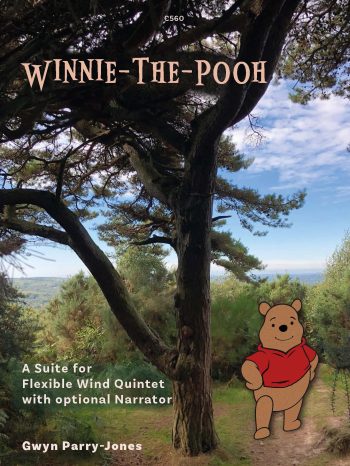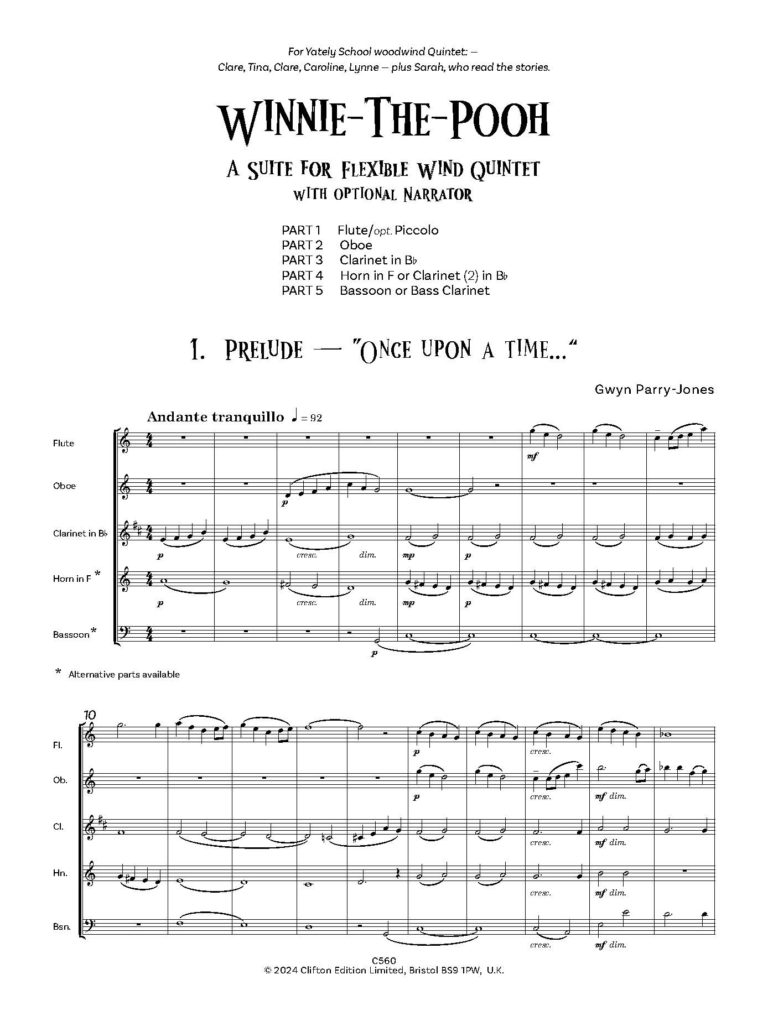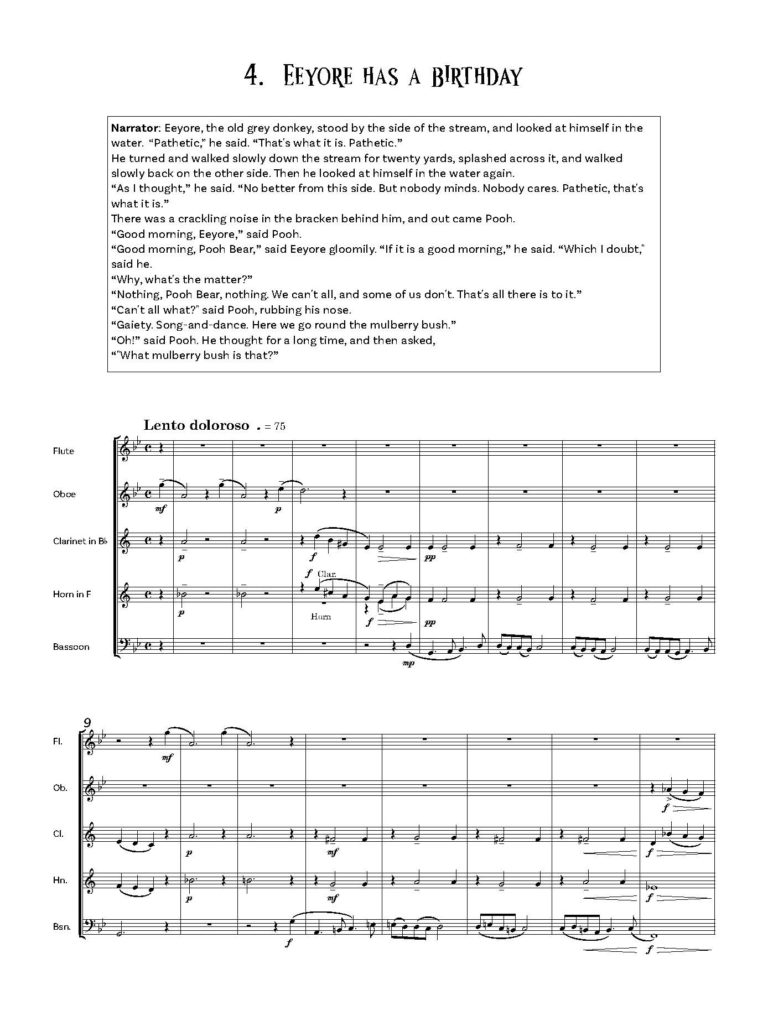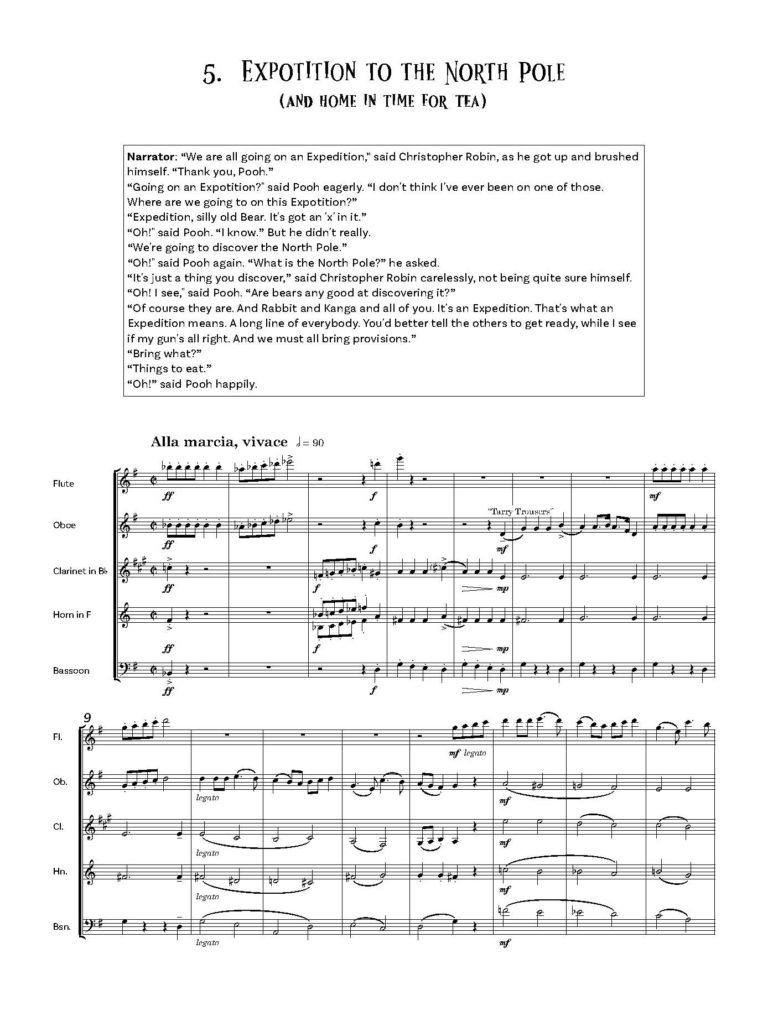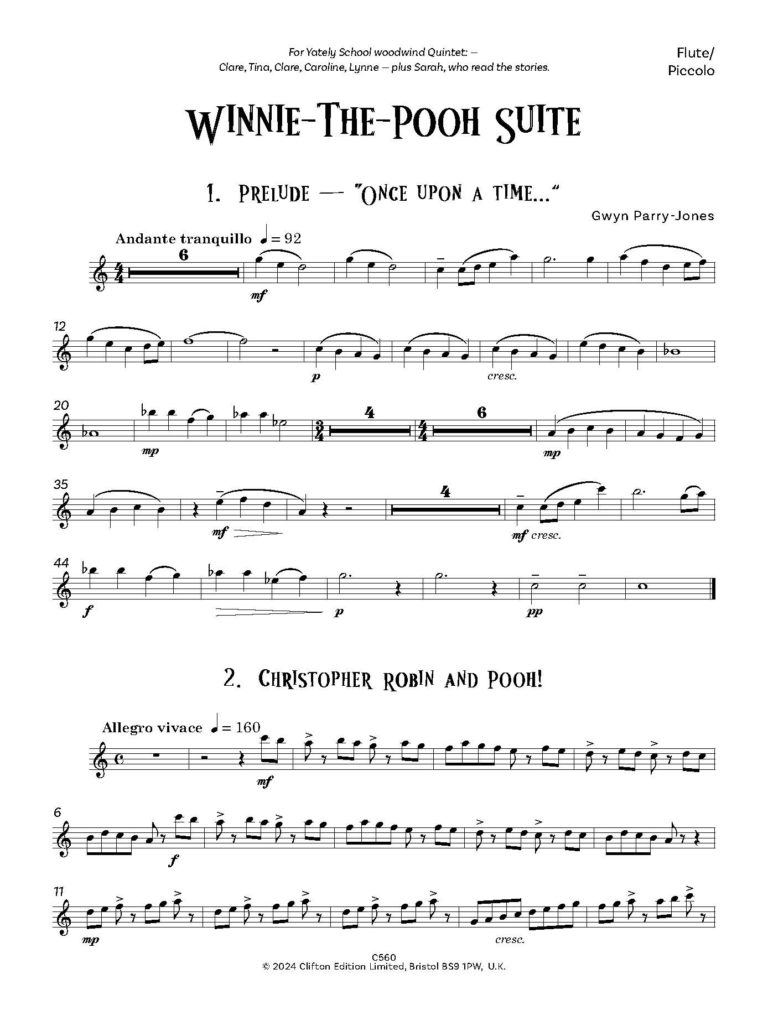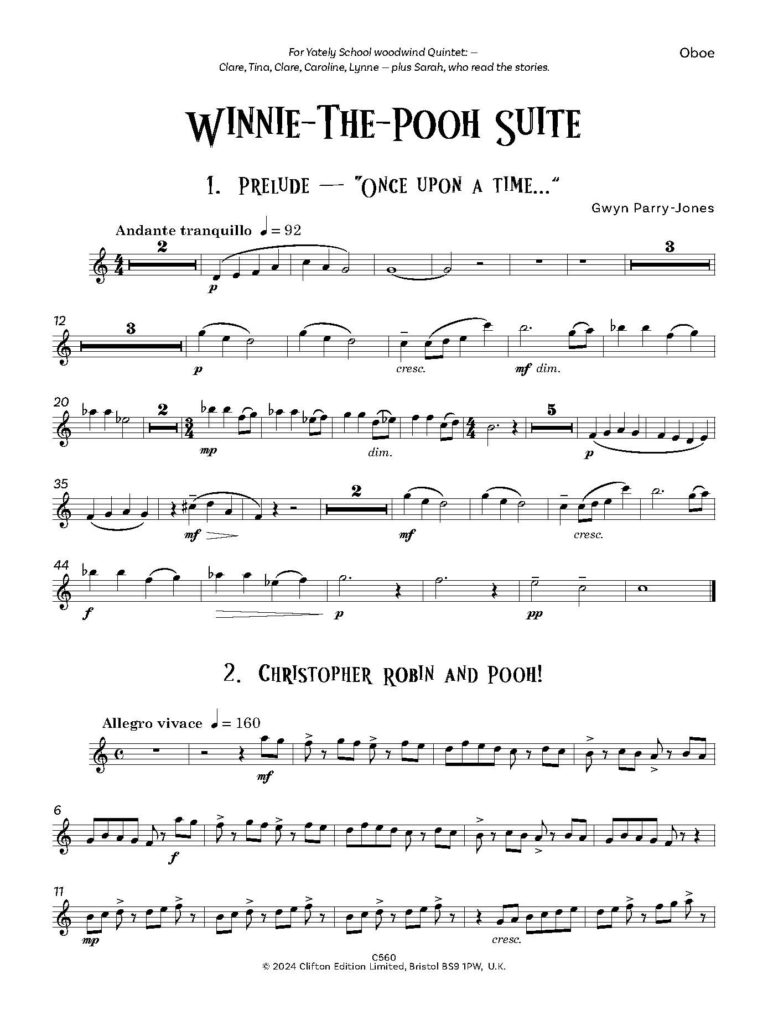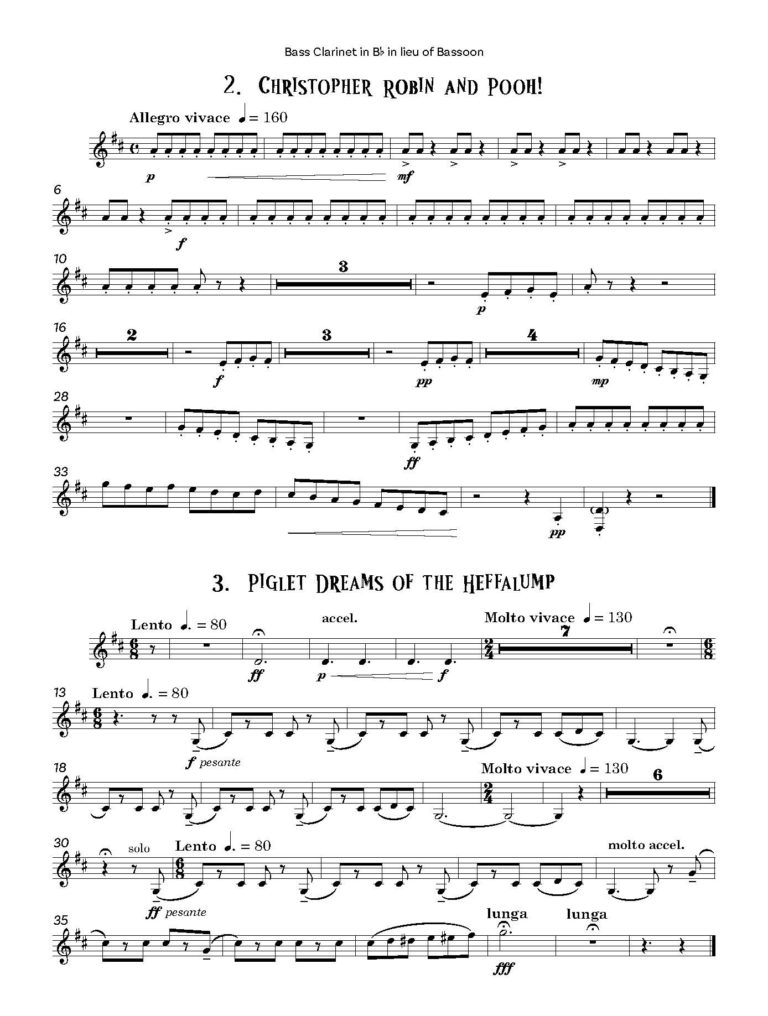Score and parts for ‘flexible’ Wind Quintet (or mixed wind ensemble in five parts).
Flexible Scoring
Part One: Flute (Piccolo)
Part Two: Oboe
Part Two: Clarinet 1 in Bb
Part Three: Clarinet 2 in Bb or Horn in F
Part Four: Bassoon or Bass Clarinet
The Winnie-the-Pooh Suite was composed during September 1997 for the woodwind quintet at Yateley School in Hampshire. The group had enormously enjoyed preparing and performing Homage to Beatrix Potter by Christopher le Fleming and asked Gwyn Parry-Jones for a companion piece. As he is a great fan of the Pooh stories, these became the inspiration for a short suite, which was first performed at Yateley School on October 23rd 1997.
Contents
1. The first movement is an introduction. Movements 2 — 5 may be prefaced by short readings from Winnie-the-Pooh by A. A. Milne.
2. Christopher Robin and Pooh: “In which we are introduced to Winnie-the-Pooh and some Bees and the stories begin”.
3. Piglet Dreams of the Heffalump: “In which Piglet meets a Heffalump”
4. Eeyore’s Birthday: “In which Eeyore has a Birthday and gets two presents”
5. Expotition to the North Pole (and home in time for tea) Describes the enthusiastic but aimless Expotition and begins with a short set of variations on the Somerset folksong Tarry Trousers, which starts “As I walked out one midsummer morning for to view the fields and take the air”.
The first editon of this Suite, published by Phylloscopus Publications in 1998, was scored for flute/opt. piccolo, oboe, two clarinets and bassoon, with alternative parts for horn in F (thereby allowing performance by a standard wind quintet) and also a bass clarinet part as alternative to the bassoon. This new edition presents the same flexible scheme.
1. Prelude -“Once upon a Time…”
2. Christopher Robin and Pooh!
5. Expotition to the North Pole
(and home in time for tea)

